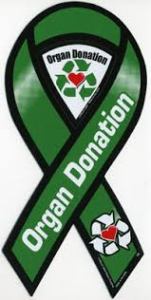 Asthma Management and Tips for Clinical Documentation– Whether you know the step approach to asthma therapy like the back of your hand, or rely on pulling it up in an app when a patient presents with asthma, the goal of this presentation is to review asthma management guidelines in a simple, concrete way to ensure the appropriate classification of asthma severity. Clinicians tend to underestimate asthma severity which can lead to inappropriate therapy. National asthma guidelines recommend assessment and documentation of asthma severity at each office visit which directs clinicians to consider the long-term management of asthma, rather than just acute treatment of the disease. Does your documentation reflect all that was assessed, discussed, determined and agreed upon at the visit? The clinical documentation of asthma severity includes indicators of quality care such as receipt of an action plan, spacer device, peak flow meter, asthma education and influenza vaccination. The chart must reflect supportive documentation regarding the specific ICD-10 diagnosis (es) selected. This presentation also will provide tips to consider for improved chart documentation of asthma in your clinical practice setting.
Asthma Management and Tips for Clinical Documentation– Whether you know the step approach to asthma therapy like the back of your hand, or rely on pulling it up in an app when a patient presents with asthma, the goal of this presentation is to review asthma management guidelines in a simple, concrete way to ensure the appropriate classification of asthma severity. Clinicians tend to underestimate asthma severity which can lead to inappropriate therapy. National asthma guidelines recommend assessment and documentation of asthma severity at each office visit which directs clinicians to consider the long-term management of asthma, rather than just acute treatment of the disease. Does your documentation reflect all that was assessed, discussed, determined and agreed upon at the visit? The clinical documentation of asthma severity includes indicators of quality care such as receipt of an action plan, spacer device, peak flow meter, asthma education and influenza vaccination. The chart must reflect supportive documentation regarding the specific ICD-10 diagnosis (es) selected. This presentation also will provide tips to consider for improved chart documentation of asthma in your clinical practice setting.
Understand how to classify asthma severity and control.
Evaluate the stepwise approach in asthma management.
Review optimal pharmacotherapy options in the provision of quality asthma care.
Enhance clinical documentation skills for appropriate coding and reimbursement.
1.25 Free CEUs for Advanced Practice Nurses
Expires 11/30/18

















 t Nile Virus Infection
t Nile Virus Infection
 Exploring Biofilms
Exploring Biofilms


 Nutritional Needs of Preterm Infants: Feeding Choices and Dietary Transitions
Nutritional Needs of Preterm Infants: Feeding Choices and Dietary Transitions
 Course 302: Cardiovascular Consequences of OSA
Course 302: Cardiovascular Consequences of OSA

 Current Concepts in Molecular Imaging of Parkinson’s Disease and Movement Disorders
Current Concepts in Molecular Imaging of Parkinson’s Disease and Movement Disorders
 Bacterial Infections in the Outpatient Setting: Avoiding Hospital Admissions with Appropriate Antibiotic Prescribing
Bacterial Infections in the Outpatient Setting: Avoiding Hospital Admissions with Appropriate Antibiotic Prescribing
 Managing the Patient with Heart Failure: The Role of the Case Manager as a Team Member
Managing the Patient with Heart Failure: The Role of the Case Manager as a Team Member  Supported by an educational grant from Novartis Pharmaceuticals Corporation.
Supported by an educational grant from Novartis Pharmaceuticals Corporation.



